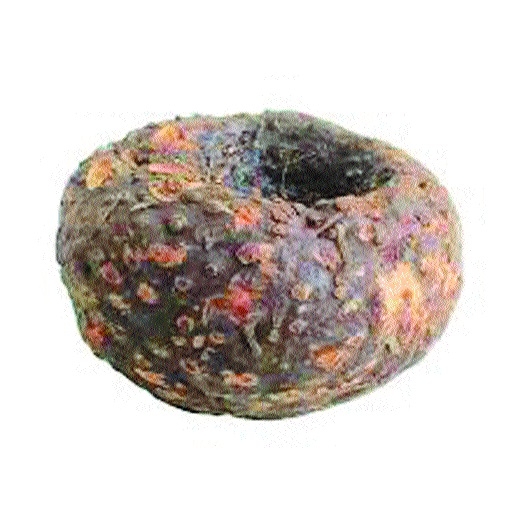Suran: A natural way to reduce bad cholesterol
| Date :27-Sep-2019 |

By Rajendra Diwe :
Suran is underground stem (corm) of a very unique looking single stalked flowering plant. It is known as wild corm or Elephant yam. After a year underground, the corm develops a unique flower with a central flowering stalk encircled by one large, maroon petal and topped with a similarly colored bulbous knob. The stalk can reach up to one meter in height. Once the flower dies, the corm produces one or two tall, green and white spotted stalks topped with several leafy branches.
Suran is unearthed once the leaf stalk has died away. The root is round and compressed with a depression on top where the stalk was removed. The dark brown, almost black skin of the Elephant yam is bark-like but thin enough to be peeled. Its mushroom colored flesh has a texture like that of a sweet potato, crisp and firm. Suran has an earthy flavour that can also be nutty with a minimal amount of sweetness. Botanically it is known as Amorphophallus companulatus. It is known in England as the Elephant Foot yam for its somewhat elephantine hoof-like appearance. In China Suran is called Cho mo yu in Chinese and Pungapung in Tagalog.
The Elephant yam’s unique flower earned it the nickname “stinky lily” or “death flower” because of the unusual smell the flower emits just after fully bloomed. Suran is a popular ingredient in Sri Lanka and in India, where it is used in curries and koftas in the northern part of the country. In Hindi it is known as Jamikand, Oal, Gandira, jangli suran, kanda, madana masta Suran. In Kannada it is famous as choorana, choorana gedde, kanda gedde, in Malyalam it is called as cena; in Marathi it is known as Sooran while in Sanskrit it is known as suranah, arsaghna, arshoghna, arsoghna, bahukanda; in Tamil it is known as anaittantu, boomi sallaraikilangu. In Telugu it is termed as alukamu, daradakandagadda, duladumpa, ghemikanda, kanda, kandagodda, manchikanda, naati kanda, oorakanda, paati kanda, potikanda. Suran is a nutrient-dense tuber and good source of carbohydrates. In Indonesia, Suran is the third most important source of carbohydrates after rice and corn.
The tubers are rich in vitamin C, B-complex (thiamine, riboflavin and niacin), potassium and manganese. The corm also contains beta-carotene, as evidenced in its orange-hued flesh. Suran is a good source of dietary fiber and phytosterols, which are compounds that help lower bad or “LDL” cholesterol, making it heart healthy and easy to digest. Suran has a lower glycemic index than potatoes, which is ideal for diabetic diets. In Uttar Pradesh, in northern India, where Suran is often known as Jimikand, the tuber is the main ingredient in a dish called ‘tariwale suran.’ The masala dish is served during the prayer of Laxmi Pujan, on the third day of Diwali, the Hindu festival of lights.
The tuber is used for its anti-inflammatory properties, as well as digestive, aphrodisiac and rejuvenating qualities. The corm is prescribed for bronchitis, asthma, abdominal pain, emesis, dysentery, enlargement of spleen, piles, elephantiasis, diseases due to vitiated blood, and rheumatic swellings. Pharmacological studies have shown a variety of effects, specifically anti-protease activity, analgesic activity, and cytotoxic activity. In addition it has been found to be a potentiator for further reducing bacteria activity when used with antibiotics.
